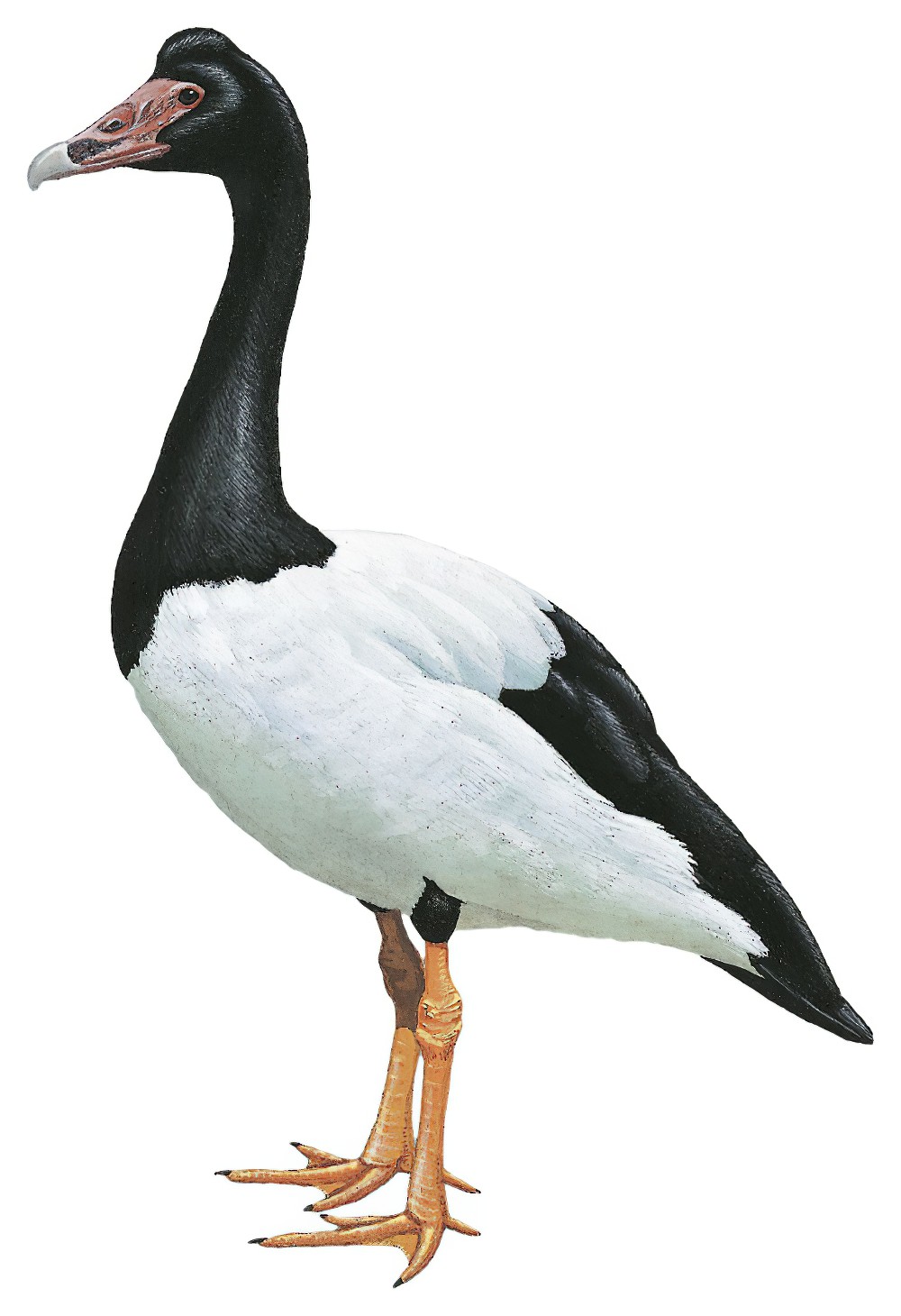Magpie Goose / Anseranas semipalmata

Magpie Goose
SCI Name:
Protonym: Anas semipalmata Trans.Linn.Soc.London(1), 4 p.103
Taxonomy: Anseriformes / Anseranatidae / Anseranas
Taxonomy Code: maggoo1
Type Locality: Hawkesbury River, New South Wales.
Author: Latham
Publish Year: 1798
IUCN Status: Least Concern
DEFINITIONS
ANSERANAS
(Anseranatidae; Ϯ Magpie Goose A. semipalmata) Portmanteau of genera Anser Brisson 1760, goose, and Anas Linnaeus, 1758, duck. The aberrant and primitive Magpie Goose is now considered to form a link between the screamers Anhimidae and the wildfowl Anatidae; "This seems to be a species not hitherto described; it is nearly of the size of the wild Goose ... the legs are red, and the toes only webbed half-way from the base ... It is peculiar in that the windpipe forms several beautiful circumvolutions on the breast, under the skin, before it enters the thorax: its note is said to be tuneful and melodious; and it was observed sometimes to perch on trees, in the manner of the Whistling Duck" (Latham 1798); "XIIe Sous·Genre. CANAROIE, anseranas. Taille et aspect général d'une oie; bec des canards proprement dits; tarses longs, et doigts presque à demi séparés ou seulement unis à leur base par une membrane peu étendue. M. Cuvier a publié, dans le tome XIV des Mémoires du Muséum, p. 345, un travail descriptif très complet, sur l'espèce qui doit servir de type à cette division. Ce savant la décrit ainsi: Le CANARD PIE A PIEDS DEMI-PALMÉS, de la Nouvelle-Hollande (anas melanoleuca, Lath., Cuv. (Mém. du Mus., 7e année, XIe cahier, p. 345, pl. 19)." (Lesson 1828); "Anseranas Lesson, Man. d'Orn., 2, 1828, p. 418. Type, by monotypy, Anas melanoleuca Latham = Anas semipalmata Latham." (Peters. 1931, I, p. 144).
Var. Anseranos, Anseranus.
Synon. Chenogeranus, Choristopus.
semipalmata / semipalmatus
Mod. L. semipalmatus semipalmated < L. semi- half-, semi-, small < semis, semissis half < as, assis whole; palmatus palmate < palma palm.
● ex Tringa hiaticula Ord, 1824 (Charadrius).
● ex “Semipalmated Snipe” of Pennant 1785, and Latham 1785 (Tringa).
UPPERCASE: current genus
Uppercase first letter: generic synonym
● and ● See: generic homonyms
lowercase: species and subspecies
●: early names, variants, mispellings
‡: extinct
†: type species
Gr.: ancient Greek
L.: Latin
<: derived from
syn: synonym of
/: separates historical and modern geographic names
ex: based on
TL: type locality
OD: original diagnosis (genus) or original description (species)












